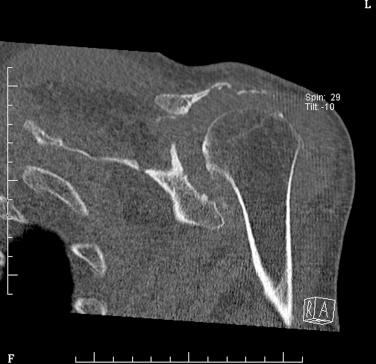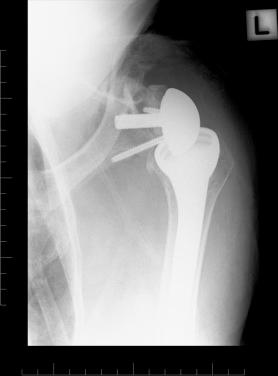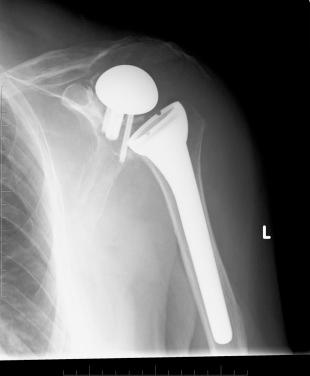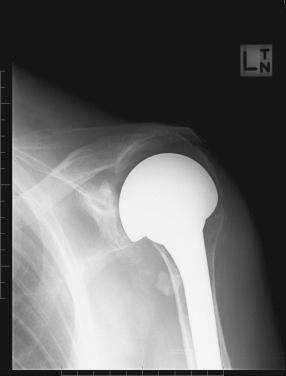Physical Address
304 North Cardinal St.
Dorchester Center, MA 02124
The management of arthritis in the presence of a significantly deficient rotator cuff has remained a challenge. Although satisfactory outcomes using hemiarthroplasty (HA) have been reported in the past by many authors (Zuckerman et al, 2000; Arntz et al, 1991; Goldberg et al, 2008), the more recent availability of reverse shoulder arthroplasty (RSA) has significantly diminished the attraction of HA for such shoulders.
Although HA was in the past considered the treatment of choice, work by Leon et al and the overview provided by Greenspoon et al (2015) have made it clear that RSA can achieve better outcomes in terms of pain relief, motion, and function in the majority of patients with cuff deficiencies in the presence of arthritis. As such, the surgical indications for HA, apart from the unfixable proximal humeral fractures or as a salvage procedure for a failed RSA, are now extremely limited.
With the wider availability of RSA, the indications for HA in rotator cuff disease have been reduced significantly to the extent that it is rarely used. In the Australian Orthopaedic Association National Joint Replacement Registry, there has been an overall steady decline in the proportions of HAs from around 35% of all replacements in 2008 to less than 9% in 2014. Of those HAs carried out, only 4.3% were performed for rotator cuff arthropathy, with the majority used for fracture (60.4%) and osteoarthritis (25%).
This decline in use of HA for rotator cuff arthropathy was similarly noted in the review by Khatib et al (2015), where rotator cuff arthropathy as an indication for HA fell from 2.64% in the period 1991–2000 to well under 1% in the period 2001–2010.
Even in situations where there is deficient glenoid bone stock, the use of custom implants and various bone allo- and autografting options further reduce the potential option of HA. Excellent reviews by Leung et al (2012) and others have reinforced the reality that an RSA has largely supplanted the HA in the surgical armamentarium for management of rotator cuff deficiency and for rotator cuff arthroplasty in particular.
The question must therefore be: Is there any place for hemiarthroplasty in the management of rotator cuff disease? In this chapter, specific potential indications for arthroplasty, albeit limited, will be presented.
For the arthritic cuff-deficient shoulder, the place of HA has now been confined to situations in which there are significant contraindications to the use of RSA and in which some sort of intervention is required to control pain and discomfort. In broad terms, these indications are present when there is deficient glenoid bone in basically five broad areas:
When there is not sufficient bone stock that would not support the insertion of a glenosphere owing to the extent or pattern of loss, or osteoporosis
Deficient proximal humerus that would not support insertion of the typically expanded profile of a reverse arthroplasty humeral component
Deltoid deficiency (although only a relative contraindication)
The patient with significant comorbidities in whom a minimalist intervention is required
The younger patient in whom RSA is contraindicated
HA also remains an option as a fallback for RSA where the glenoid component has failed and further complex reconstruction is not deemed appropriate ( Figs. 38.1–38.4 ). The prime consideration is not when to do HA, but when RSA is contraindicated.




The potential clinical indication is a younger patient with rotator cuff arthropathy deemed too young for RSA, which remains controversial.
Sershon et al (2014) identified a 25% rate of failure of RSA in patients under 60, with similar failure rates noted by Ek et al (2013). The fallback in this group of patients was HA, indicating an increasing indication for this option as a secondary solution rather than a primary procedure.
The introduction of new bearing surfaces with lower glenoid wear rates, such as pyrocarbon ( https://clinicaltrials.gov/ct2/show/NCT01587560 ), may expand the indications for shoulder HA. Such options remain experimental. However, excessive glenoid erosion has been a predictable and inevitable outcome following HA in younger patients, and this has not been circumvented by the use of some sort of biological interpositional material. Although initial reports were quite supportive, long-term reviews have failed to identify persistent or satisfactory outcomes.
The actual approach and surgical procedure will be dictated by the indications for the operation. However, HA is typically performed using a standard deltopectoral approach with subscapularis tenotomy or osteotomy, but with attempts at preservation and, if possible, repair of any residual rotator cuff.
In this particular situation where glenoid preparation is not critical, a subscapularis sparing through the rotator interval has some advantages with respect to early mobilization and avoidance of the combination of subscapularis rupture with or without preparation of the glenoid using the ream and run technique (Matsen), simply debriding the osteophytes, or inserting some sort of biological interpositional material, mobilization and avoidance of the combination of subscapularis rupture with or without preparation of the glenoid using the ream and run technique (Arntz et al 1991), simply debriding the osteophytes, or inserting some sort of biological interpositional graft. None of these procedures produced significantly improved outcomes on a consistent basis.
As detailed above, patients suitable for this sort of intervention include:
Older patient with major comorbidities and likely contraindications to RSA
Lower-demand poor glenoid bone stock
Young patient, possibly as an alternative to performing a shoulder arthroplasty where a patient is deemed to be too young for RSA with potential for improved wearing characteristics in the longer term with newer bearing materials such as pyrocarbon
Patients suitable for shoulder HA typically have signs of cuff deficiency with loss of external rotation power, with those patients with greater than 90-degree forward elevation, particularly if younger, having quite satisfactory outcomes in various proper series. Results of patients over the age of approximately 60, however, have far improved with RSA if they have been deemed to have satisfactory glenoid bone stock, and even deficient glenoid bone stock can be addressed by bone autologous graft or allograft.
Plain radiographs, including axillary view to look for degenerative changes, and humeral head migration
Computed tomography to assess bone stock
Magnetic resonance imaging to assess rotator cuff integrity and extent of muscle atrophy
Become a Clinical Tree membership for Full access and enjoy Unlimited articles
If you are a member. Log in here